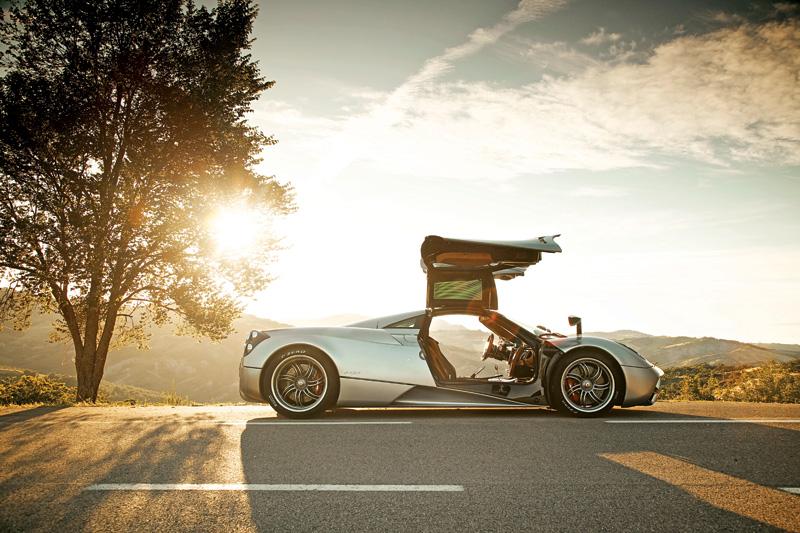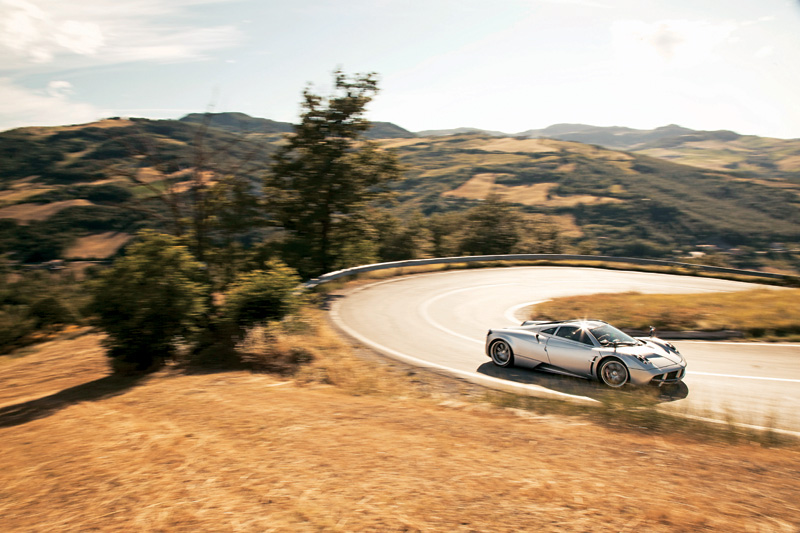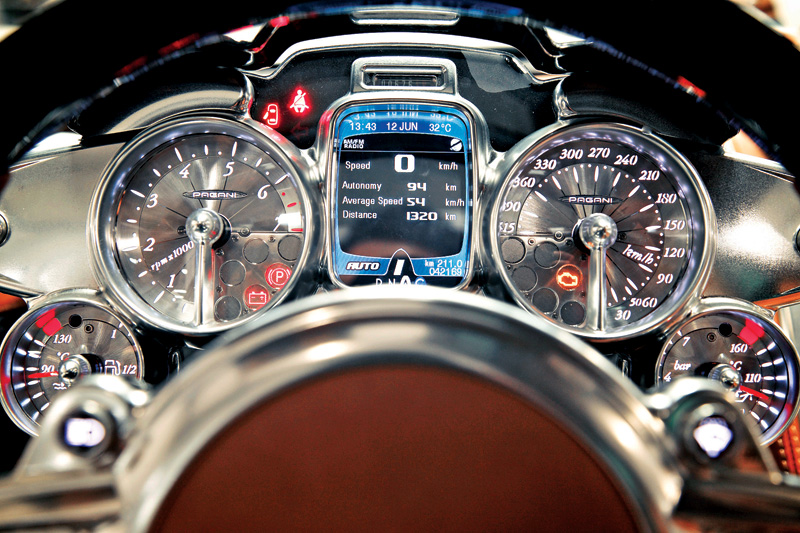The Huayra is still mesmerisingly good to drive, though. That AMG V12 pulls cleanly from next-to-no revs and the throttle response is very precise for a blown mill, the bonsai turbos located on truncated manifolds for improved response. The delivery is, however, necessarily different from a naturally aspirated lump, so you get that initial swell of power and then, at a little beyond 2,000 RPM, it’s as if a rocket ignites, so that the sense of gradually metering in the revs disappears, replaced by a more visceral wave of boost that sneaks up from behind you, hooks its fingertips into your nostrils and pulls your head back hard. It means you have to be very disciplined with the throttle to keep things smooth on a twisty road, and very quick with steering corrections when things get out of shape.
When the turbos come in and you keep your foot flat to the floor, you have to hold on and you have to be ready for the fairly lackadaisical traction control to allow the tyres to spin up and cut the drivetrain a bit of slack. As the eloquent Pagani uniquely has it, “I don’t like driving a car with traction-control lights flashing all the time. It’s like having sex in a wetsuit.”
Thankfully, the Huayra is a very well-balanced car: in slower corners you’ll feel a smudge of safety understeer if you push hard, which is easily dialled out with a little patience followed by a dose of acceleration or you can turn in hard to faster corners and lean on the relentless poise of the front end as it swipes at the apex, sense that the tyres will still take a bunch more abuse, and that the chassis isn’t about to roll any time soon. This, in part, is due to very well sorted passive and active aerodynamics, the two flaps at the nose and the tail of the Huayra popping up in tandem on straights or individually through corners. Why individually? Because this squashes the inside, unloaded wheel back into the surface during cornering. Either way, the flaps help to increase the drag factor from .31Cd to .36Cd, seamlessly upping downforce at critical moments and negating the need for a rear spoiler. I followed Pagani test driver Davide Testi round a large roundabout, me in a Zonda, Testi in the Huayra, and the Zonda started to slip sideways at a constant throttle where the Huayra was still accelerating away.
It’s that stability, together with the huge hammer of an engine, that’s part of the reason why the Huayra is fully four seconds faster around Nardo’s handling circuit than its predecessor, which could, if my fag-packet calculations are correct, translate into an impending sub-seven-minute-10-second Nordschleife lap, a significant leap over the Zonda’s seven-min-24-sec and a scorching fast time in its own right.
























Leave a Reply